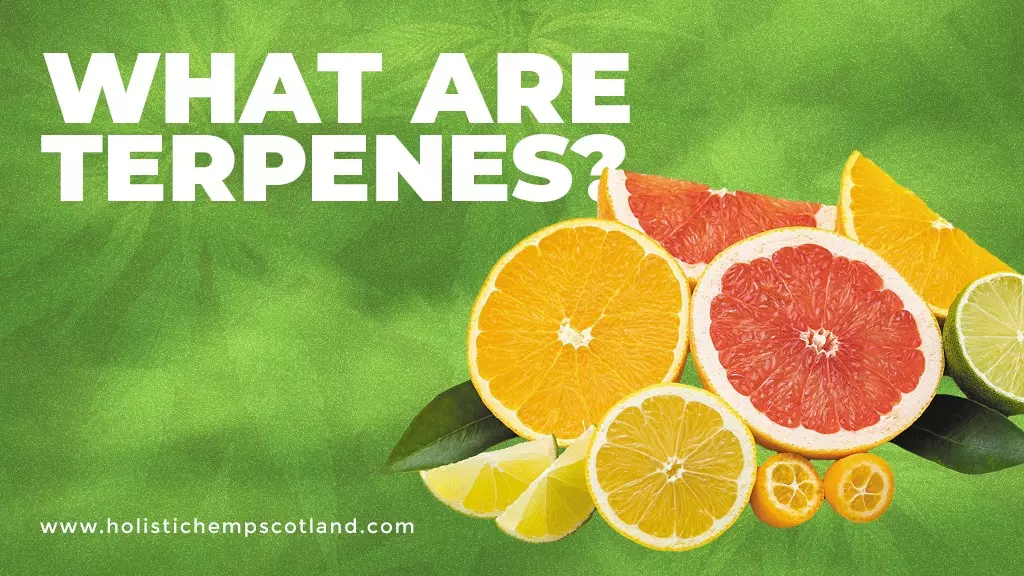Recent Posts
Post Catagories

Terpenes: What Are They And How Do They Work?
Terpenes are plant essential oils and they exist in all plants, flowers, and trees. The aromas of different plants are dependent on their terpenes. Think of the smell of fresh fruits and veggies in your kitchen, the enticing aroma of flowers from your garden, or your favorite body fragrance of choice. Terpenes are what you smell, and knowing what they are is sure to deepen your appreciation of cannabis.
There are many different varieties of cannabis plants and each variety has different concentrations of terpenes. The terpenes are what give cannabis varieties their characteristics.
These compounds are the fragrant oils that give cannabis its distinctive flavors and smells, ranging from citrus to pine, to berry, and mint. These organic compounds provide aroma and flavor not only in cannabis but also a variety of other organisms, including herbs, fruits, and plants. And they do more than simply provide scent.
Terpenes are secreted in the flower’s sticky resin glands, the same glands that produce cannabinoids like THC and CBD. They are formed inside cannabis trichomes and increase in production with light exposure. Terpenes and cannabinoids are believed to work together through a process known as the entourage affect. In this way, certain terpenes can moderate how much of the psychoactive THC is absorbed by the body, thereby controlling potency.
Over 100 terpenes have been identified so far, and every strain has a unique profile. The most common are Guaiol, Limonene, Humulene, Pinene, Linalool, Caryophyllene, Myrcene and Terpinolene.
Guaiol
Guaiol is a lesser-known terpene and produces a distinctive scent with pine, wood, fruit, and rose notes. It has gained attention recently due to its potential therapeutic benefits and industrial utility. Research on guaiol is still in its early stages, but some studies suggest it may positively affect human health, including anti-cancer, anti-bacterial, and potential anti-inflammatory properties.
Limonene
Limonene has a lemon scent. This wonderful terpene has amazing qualities that may assist to improve mood, ease tension, and cleanse and clean. Additionally, it enhances the absorption of other terpenes and body-nourishing components contained in your favourite CBD oil, making it ideal for tinctures, ointments, and other topicals.
Humulene
Humulene is an earthy, woody, and somewhat spicy herbal terpene present in the cannabis plant. This potent terpene has a calming, purifying effect and is known to be an appetite suppressor.
Pinene
Pinene is the most common terpene on the planet, and it has amazing calming qualities. It has been shown to help with alertness, memory, and respiratory function.
Linalool
Linalool is the compound that gives lavender its distinctive aroma. Scientists believe that this potent terpene is to blame for lavender’s sleep-inducing properties. Linalool is an antioxidant that may help to balance your mood.
Caryophyllene
Caryophyllene, like most terpenes found in CBD, has a calming impact as well as antioxidant properties. Another wonderful feature of this terpene is its potential to help reduce stress levels in the body and the long-term negative impacts of stress.*
Myrcene
Myrcene is the most common compound detected in cannabis. In fact, myrcene can account for up to 65% of a plant’s terpene composition. This potent terpene is known to offer both calming and tension-relieving qualities.
Terpinolene
Terpinolene can be found in a wide range of plants, including mints, citrus fruits, juniper, and parsnips. It’s difficult to pin down the specific flavour characteristic of this enigmatic terpene because it smells like citrus one minute and flowers the next. What we do know is that terpinolene may be the terpene responsible for CBD’s soothing effects.
These compounds are produced by many different plants and are similar to essential oils. They have a strong aroma which is intended to deter pests such as insects or grazing animals. Currently, scientists have discovered around 20,000 different terpenes in the plant world. It is thought that there are over 150 different types of terpenes in the cannabis sativa plant alone.
Our Organic Luxury (Cannabis Sativa L) Hemp Tea Full Of Spicy Terpenes
Like many plants, cannabis uses terpenes as part of its defense against insects and herbivores. They are produced in small glands called trichomes, which is also where cannabinoids such as THC and CBD are synthesized.
These glands appear as a frosty, white coating on the buds and upper leaves of cannabis plants. If you were to look at these trichomes under a magnifying glass, you might see that they have an almost mushroom-like shape, with a small round head being supported by a narrow ‘stalk.’
As a cannabis plant matures, these trichomes turn from clear to milky white, and eventually to yellow or brown. Marijuana cultivators often use these trichomes as a way to determine when their plants are ready to harvest, with the milky white stage considered the optimal time.
Around 10% of these trichomes are made up of terpenes, with the rest comprising cannabinoids and other compounds such as flavonoids. The specific terpene and cannabinoid composition will vary depending on which strain you choose and its growing conditions.


Comments are closed.